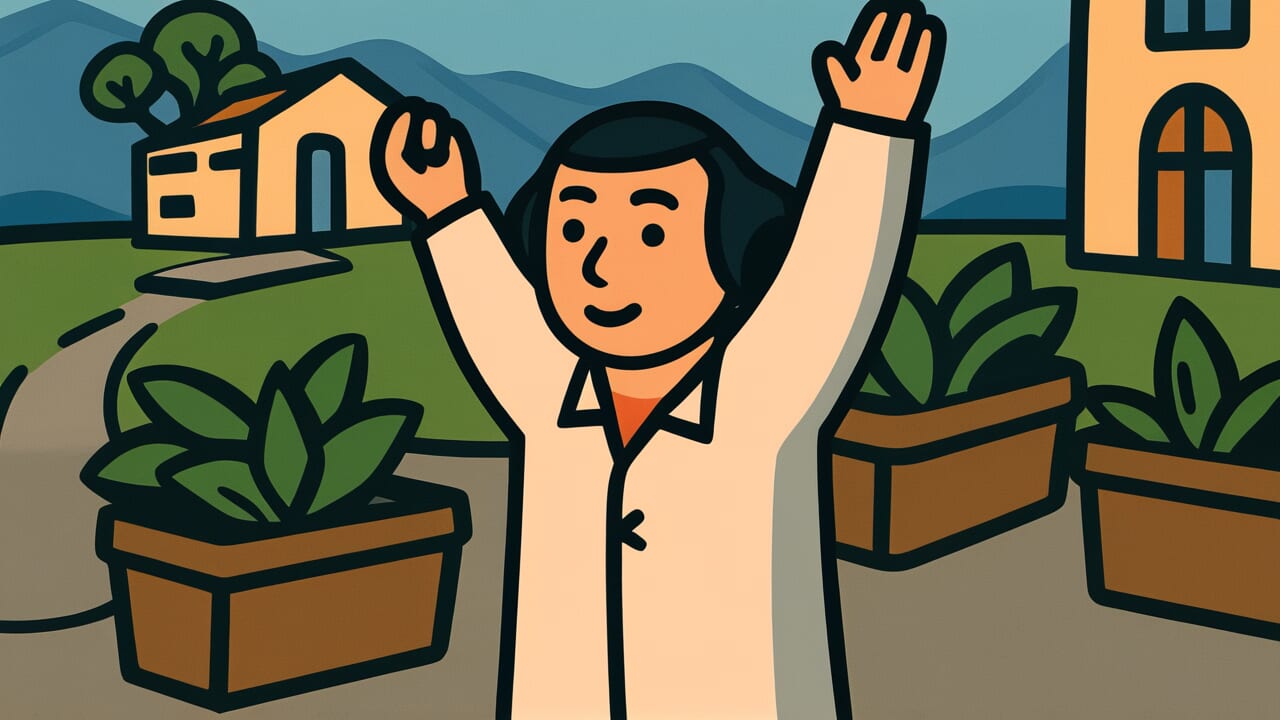How to Read “Where there’s life there’s hope”
Where there’s life there’s hope
[WAIR thairz LAHYF thairz HOHP]
All common English words with standard pronunciation.
Meaning of “Where there’s life there’s hope”
Simply put, this proverb means that as long as you’re alive, good things can still happen to you.
The basic message is straightforward and hopeful. The word “life” refers to being alive and breathing. The word “hope” means believing that better times might come. Together, they create a powerful reminder that survival itself creates possibilities.
We use this saying when things look really bad. Maybe someone lost their job, failed a test, or went through a breakup. People share this proverb to remind others that tough times don’t last forever. As long as you’re still here, you can try again, learn new things, or find different paths forward.
What’s interesting about this wisdom is how it connects two simple facts. Being alive means your story isn’t over yet. Tomorrow could bring unexpected opportunities, new friendships, or solutions you haven’t thought of. Many people find comfort in this idea when everything feels hopeless. It suggests that giving up is always too early.
Origin and Etymology
The exact origin of this specific phrase is unknown, though similar ideas appear throughout human history.
The concept behind this proverb is ancient and universal. People have always faced difficult times and needed encouragement to keep going. Ancient civilizations developed sayings that connected survival with possibility. These ideas helped communities support members who were struggling or facing hardship.
The English version we know today likely developed over several centuries. Similar phrases appear in old texts and folk wisdom from different regions. The saying spread through everyday conversation, religious teachings, and written works. People found the message so useful that they kept sharing it across generations.
Interesting Facts
The proverb uses a simple grammatical structure called parallel construction. Both halves follow the same pattern: “where there’s [noun] there’s [noun].” This makes the saying easy to remember and gives it a rhythmic quality when spoken aloud.
The word “hope” comes from Old English “hopian,” meaning “to wish for” or “to expect.” It’s related to similar words in other Germanic languages, showing how this concept has been important across cultures.
Usage Examples
- Doctor to family: “The patient is still in critical condition but responding to treatment – Where there’s life there’s hope.”
- Coach to player: “You’ve lost every game this season but still have the championship ahead – Where there’s life there’s hope.”
Universal Wisdom
This proverb captures something fundamental about human psychology and our relationship with uncertainty. Humans are naturally forward-looking creatures, constantly imagining possible futures and working toward goals. This mental ability to project beyond current circumstances has been crucial for our species’ survival and success.
The wisdom reveals a deep truth about resilience and adaptation. Throughout history, humans have faced famines, wars, diseases, and personal tragedies. Those who survived often shared a common trait: they could imagine better circumstances ahead. This wasn’t just wishful thinking but a practical survival mechanism. Hope motivated people to conserve resources, seek help, try new strategies, and endure temporary suffering for potential long-term benefits.
The proverb also acknowledges a profound paradox in human experience. Our greatest strength and our greatest vulnerability both stem from the same source: our awareness of time and possibility. We suffer because we can imagine better circumstances than our current ones. Yet this same ability to envision different futures gives us the motivation to persevere through difficulties. The saying suggests that consciousness itself, with all its capacity for both suffering and dreaming, is ultimately a gift that creates opportunities for positive change.
When AI Hears This
Hope works like keeping a car engine warm in winter. People use tiny amounts of mental energy to maintain all possibilities. This prevents their dreams from completely shutting down. Even when situations look terrible, humans keep this background system running. It costs almost nothing but keeps everything ready for quick action.
This reveals humans are incredibly efficient planners without knowing it. Instead of chasing every dream at once, they keep all options barely alive. When the right moment comes, they can instantly shift full energy there. This explains why people hold onto hope in impossible situations. Their brains treat it as cheap insurance against missing future opportunities.
What fascinates me is how this looks wasteful but is actually brilliant. Humans maintain thousands of dormant possibilities their whole lives. Most will never activate, yet the system works perfectly. It is like keeping every door in a building slightly open. You waste a little heat but can escape through any exit instantly.
Lessons for Today
Living with this wisdom means developing a different relationship with difficult circumstances. Instead of viewing problems as permanent conditions, this perspective encourages seeing them as temporary situations that can evolve. This doesn’t mean ignoring real challenges or pretending everything will automatically improve. Rather, it means staying open to possibilities that aren’t visible yet.
In relationships and communities, this wisdom creates space for second chances and growth. People make mistakes, relationships go through rough patches, and groups face conflicts. Remembering that life continues and circumstances change helps prevent permanent judgments about temporary situations. It encourages patience with others who are struggling and supports the idea that people can learn, heal, and improve over time.
The challenge lies in maintaining this perspective when evidence suggests otherwise. Sometimes situations do seem hopeless, and positive thinking alone doesn’t solve real problems. The wisdom works best when combined with practical action and realistic assessment. Hope becomes most powerful when it motivates effort rather than replacing it. This ancient insight reminds us that as long as we’re capable of trying, learning, and adapting, our stories remain unfinished and our possibilities remain open.



Comments